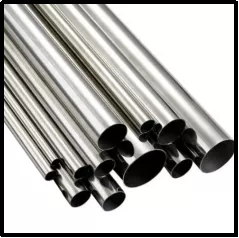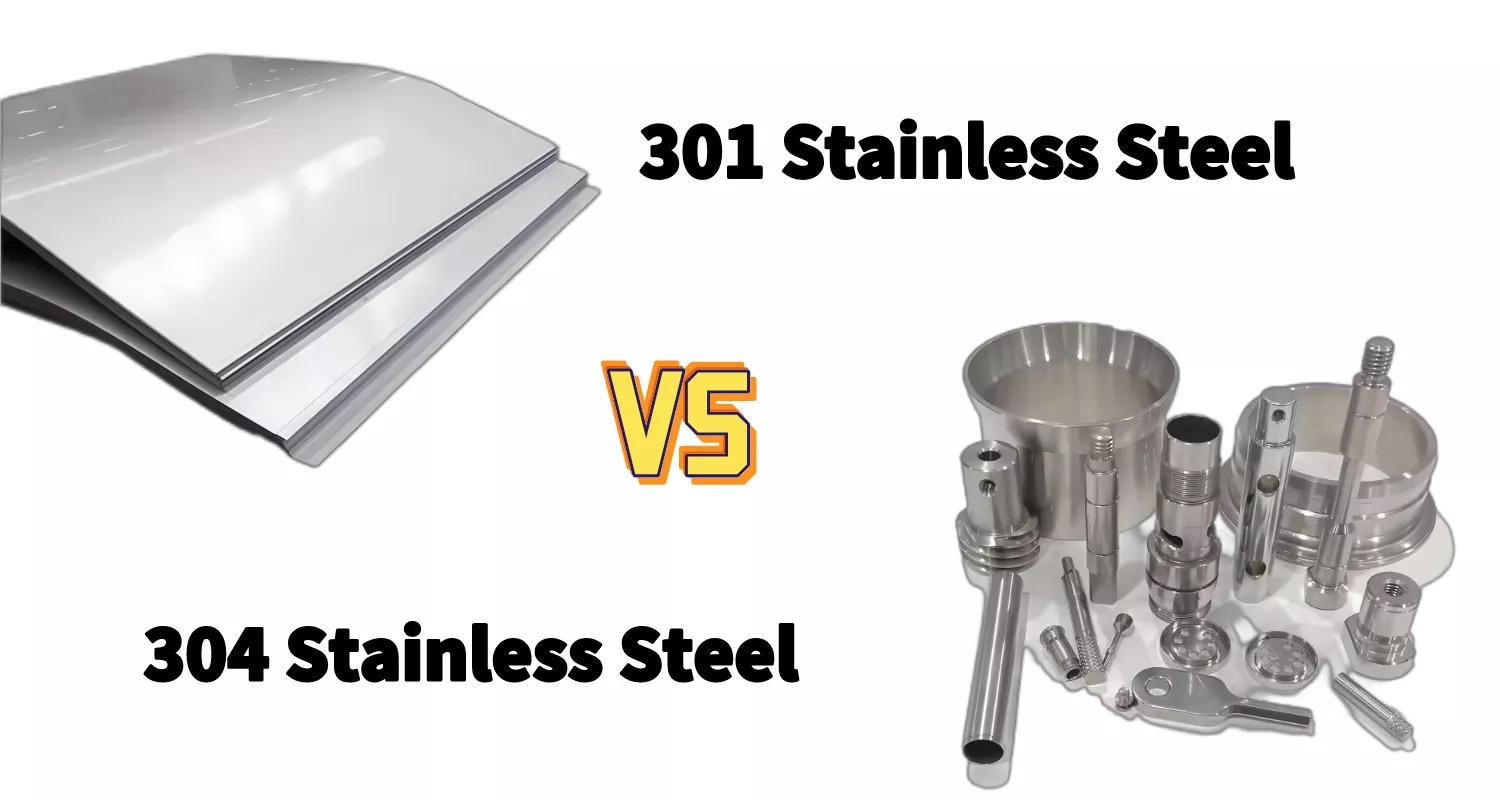304 VS 301 Stainless Steel: Which is Better
 May 13,2024
May 13,2024

300 series stainless steel are one of the ultimate materials known for its impactful properties in various applications. This material is available in different grades based on the alloy composition and properties. This particle article will have a strong focus on comparative analysis between 304 and 301 stainless steels. Both grades have exceptional properties including corrosion resistance, high strength, durability and vice versa. So, regardless of your profession, this article will lead you to a deeper understanding of the comparative analysis of both grades.
304 Stainless Steel
An 18-8 Stainless Steel which constitutes of high percentage of chromium and nickel along with other alloying elements due to which it comprises of excellent corrosion resistance especially at elevated temperatures. It is usually nonmagnetic in nature with less electrical and thermal conductivity as compared to carbon steel. Furthermore, 304SS exists in more than one form which is 304L and 304H based on the amount of carbon. Major applications include food processing, medical, architecture and vice versa.

Figure 1, 304 grade SS
YouTube link:
https://www.youtube.com/watch?v=tSX1AQqzoeQ&pp=ygUTMzA0IFN0YWlubGVzcyBTdGVlbA%3D%3D
301 Stainless Steel
A 301 Grade Stainless Steel which is well known for its exceptional tensile strength, toughness along with rapid work hardening properties. This material shows its suitability for all types of welding. Furthermore, the presence of chromium and nickel in its composition offer corrosion resistant but only to mild conditions. Moreover, it is nonmagnetic in nature under a heat treatment process i.e., annealed state but has the ability to become magnetic once it has gone through cold working. 301SS shows its availability in variety of conditions including 1/4 hard, 1/2 hard, as well as full hard which opens door for this material in variety of applications including aerospace component and other industrial usage.

Figure 2, 301 grade SS
YouTube link:
https://www.youtube.com/watch?v=gSX8xtIdrxM&pp=ygUTMzAxIFN0YWlubGVzcyBTdGVlbA%3D%3D
What is the Difference Between 301 SS and 304 SS?
Several factors based on which a detailed comparative analysis between both the grades can be done are discussed one by one below:
Chemical Composition
Table 1, Chemical composition
|
Element |
304 grade SS (%) |
301 grade SS (%) |
|
C |
0.08 |
0.15 |
|
Si |
1.00 |
1.00 |
|
Mn |
2.00 |
2.00 |
|
P |
0.045 |
0.045 |
|
S |
0.030 |
0.030 |
|
Cr |
18.0 to 20.0 |
16.0 to 18.0 |
|
Ni |
8.0 to 10.5 |
6.0 |
|
Fe |
Balance |
Balance |
Chromium and Nickel in Stainless Steel
Both chromium and Nickel possess an essential role in stainless steel which are discussed below one by one:
Role of Chromium:
Chromium is the major alloying element present in the composition of stainless steel. This alloying element creates a protective oxide layer on the steel surface that provides corrosion resistant when exposed to external environments. The presence of this passive layer is what makes stainless steel stainless.
Role of Nickel:
Nickel is another important alloying element present in stainless steel composition. It also plays a role in material properties which are mentioned below:
- Provides corrosion resistant in acidic and environment comprising elevated temperature.
- Contribution towards the austenitic steel structure which enhances the material’s overall toughness, ductility as well as formability.
- Its presence makes stainless steel highly versatile for a variety of applications.
Carbon Content in Stainless Steel
The carbon present in stainless steel has a significant role to play especially in 301 grade which are mentioned below:
- The carbide formation and solid solution strengthening of this material leads to mechanical force resistance and resistance to corrosiondue to the presence of adequate amount of carbon.
- The presence of excess amount of carbon in stainless steel can affect the ductility of certain grades of stainless steel. However, UNS S30100with comparatively low carbon content provides necessary strength without affecting the ductility.
- 301 grade can be machined due to low carbon content although high carbon in stainless steel can lead to poor machinability and various other challenges associated with it such as tool wear.
- Carbon also plays an important role in work hardening 301 grade SS as the atoms of carbon help in pin dislocation which strongly influence on the overall strength of the material.
Corrosion Resistance
A2 Stainless Steel has higher corrosion resistance due to the presence of high percentage chromium and nickel in its composition. Secondly, it can sustain a variety of environmental conditions which are highly exposed to corrosion including freshwater, atmospheric condition, mild acid and vice versa. On the other hand, 301 grade stainless steel has relatively low resistance to corrosion due to lower percentage of Cr and Ni. Therefore, it might be challenging for this material to sustain aggressive conditions consisting of sulphuric acid and chlorides.
Mechanical Properties
Table 2, Mechanical properties
|
Property |
301 grade SS |
304 grade SS |
|
Density |
7.93 g/cm³ |
7.93 g/cm³ |
|
Hardness (Rockwell B) |
95-100 |
70-90 |
|
Electrical Resistivity |
0.72 × Ω·m |
0.72 × Ω·m |
|
Tensile Strength |
590-690 MPa |
505-515 MPa |
|
Ductility |
40-45% |
40-60 % |
|
Thermal Expansion Coefficient |
16.5 × μm/m·K |
17.3 × μm/m·K |
|
Impact Toughness (J) |
Varies |
Varies |
|
Fatigue Strength (at 2 × 10^6 cycles) |
270 MPa |
150 MPa |
CNC Machining
Although both grades comprise of similar processes when CNC machining is done but due to differences in the composition as well as properties, some parameters must be addresses and should be kept in mind while machining the certain grade according to engineering criteria:
- Machine and tooling
- Tool material
- Coolant choice
- Work holding fixtures
- Measurement tools
Specific Applications

304 Stainless Steel:
- Valves and Pumps: These components benefit from 304's corrosion resistance, making them suitable for handling water and food products, ensuring a long service life in harsh environments.
- Fittings and Fasteners: The non-reactive qualities of 304 make it ideal for screws, nuts, and other fittings that must withstand corrosive agents without degradation.
- Custom Enclosures: For electronics or food processing equipment that requires a durable, cleanable surface, 304 stainless steel is an excellent choice for protective enclosures.
301 Stainless Steel:
- Aerospace Components: The high strength-to-weight ratio of 301 stainless steel is perfect for aerospace applications, including structural parts and support elements within aircraft.
- Automotive Parts: In the automotive industry, 301 is used for vehicle frames and other structural components that require strength and durability to withstand stresses while remaining lightweight.
- Spring Mechanisms: Due to its excellent elasticity, 301 stainless steel is commonly used for springs and wire products, where it must maintain its form and strength after repeated stress.
Cost
Based on properties and composition, 304 grade of stainless steel is expensive as compared to 301 grade stainless steel. Furthermore, 304 grade has a longer lifespan with low maintenance cost comparatively due to which it is costly initially.
Summary Chart of AISI 301 and 304
Table 3, Summary chart
|
Properties |
AISI 301 grade SS |
AISI 304 grade SS |
|
Composition |
18-20% Cr, 8%Ni with small C content |
16-18% Cr, 6% Ni with small C content |
|
Density |
7.93 g/cm³) |
7.93 g/cm³ |
|
Hardness (Rockwell B) |
95-100 |
70-90 |
|
Electrical Resistivity |
0.72 × Ω·m |
0.72 × Ω·m |
|
Tensile Strength |
590-690 MPa |
505-515 MPa |
|
Ductility |
40-45% |
40-60% |
|
Thermal Expansion Coefficient |
16.5 × μm/m·K |
17.3 × μm/m·K |
|
Corrosion Resistance |
Good |
Excellent |
|
Machinability |
Fair |
Good |
|
Applications |
Kitchen utensils, Medical |
Fastener, coils |
Advantages and Disadvantages 304 vs 301 Stainless Steel
304 Stainless Steel:
| Advantages |
Disadvantages |
|
Good corrosion resistance Easy to process Good Appearance |
Relatively low strength Susceptible to scratches Average wear resistance |
301 Stainless Steel:
| Pros | Cons |
|
Greater formability and drawing Less expensive |
Lower corrosion resistance High carbon content Machinability |
Which is Better 304 or 301 Stainless?
The material selection totally depends on the requirement of the application. It you are going for good corrosion resistance especially at elevated temperature along with durability and longer lifespan then 304 grade SS is better option. On the other hand, if the application is cheap, requires high tensile strength and not exposed to elevated temperatures or any aggressive environmental conditions, then in that scenario 301 grade SS is better as compared to 304.
 Tel/WeChat:
Tel/WeChat:  Email:
Email: 
 Home
Home
 2205 Stainless Steel vs 316: What is Better
2205 Stainless Steel vs 316: What is Better 







